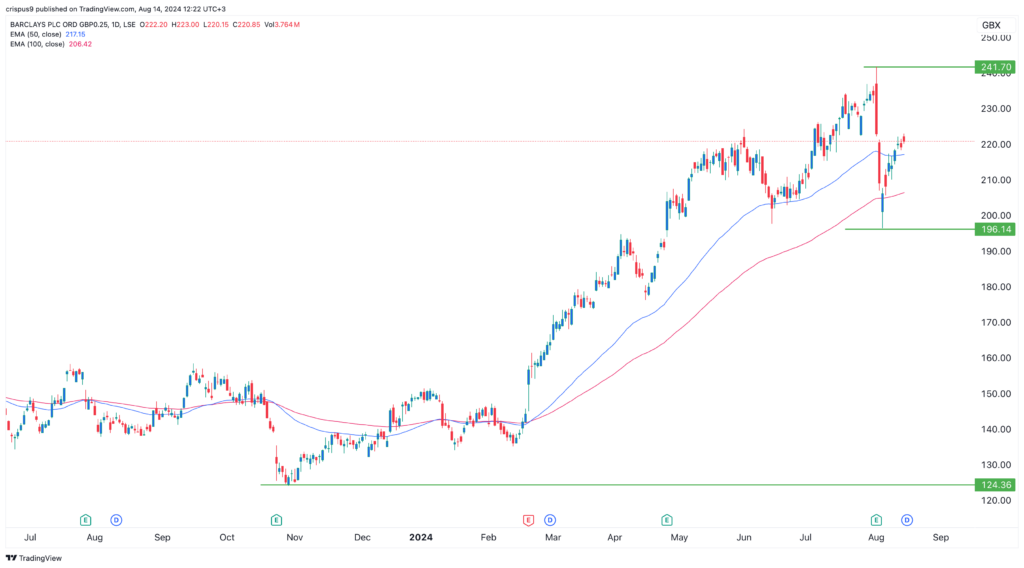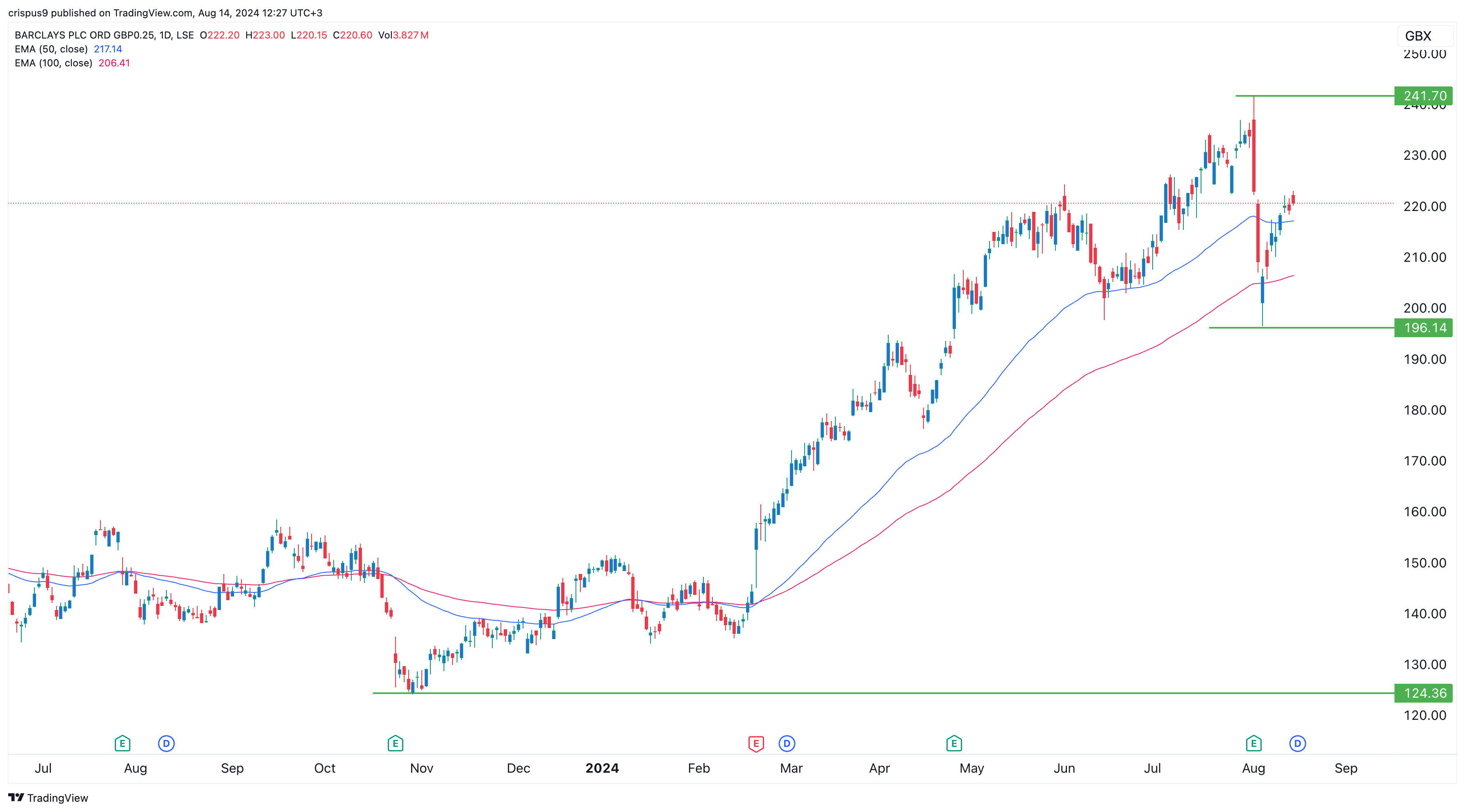Lloyds and Barclays share prices have held steady in the past few days as investors focus on the British economy. Barclays (BARC) stock was trading at 220p on Wednesday, 12% higher than this month’s low of 196.30p. It has risen by over 44% this year, making it one of the best banking stocks globally.
Similarly, Lloyds Bank has jumped by over 24% this year and is hovering near its highest point since 2020. Its surge has brought its total market cap to over $44 billion.
The UK economy is doing well
The British economy is doing well if the recent macro numbers are to go by. On Wednesday, a report by the Office of National Statistics (ONS) showed that the country’s inflation rose slightly in July.
The headline Consumer Price Index (CPI) rose from 2.0% in June to 2.2% in July. On the positive side, the headline CPI retreated by 0.2% on a month-on-month basis while the core CPI dropped to 0.1% and 3.3%, respectively.
Another report released on Tuesday showed that the unemployment rate dropped to 4.2% in June while the average earnings dropped from 5.8% to 5.4%, higher than the expected 4.6%.
Banks like Lloyds and Barclays are highly exposed to the British economy. Lloyds, in particular, is more exposed because it serves over 26 million customers and has no business outside the country.
Barclays has a huge presence in the UK as well. Just recently, it spent millions of pounds buying Tesco Bank, a large company that was previously owned by Tesco, the retail giant. It also acquired Kensington Mortgages in 2023.
Why Lloyds and Barclays are doing well
The two banks have done well this year for various reasons. Lloyds’ share price has jumped because of its strategy to cut costs. Some of the measures it is taking is to close branches as more people embrace online banking and layoffs. Earlier this year, it announced that it would lay off over 1,600 workers.
Lloyds has also committed to reducing its capital reserves, and is targeting a CET1 ratio of 13% by 2026. It is using these funds to reward its shareholders through dividends and share buybacks. Earlier this year, the company started repurchasing stocks worth about £2 billion.
In its most recent results, Lloyds Bank said that its net interest income for the first half of the year came in at £6 billion while the other income jumped by 59% to £12 billion. In total, its profit for the year dropped by 15% to £2.4 billion.
Like Lloyds, Barclays Bank is doing well for several reasons. First, its recent financial results were better than expected. Its second-quarter income stood at £6.3 billion, bringing its first-half of the year income to £13.3 billion. Its profit before tax was £1.9 billion and £4.2 billion, respectively.
Also, the company is returning excess capital to investors. It returned £1.2 billion to investors in the first half. Most of these funds were through dividends (£750 million) while the rest were through dividends.
Second, the company’s troubled investment banking division has started to bounce back. Its revenue rose by 10%, helped by the global markets and higher fees. This division was offset by a drop in its Fixed Income Commodity and Currency (FICC business.
Barclays is set to benefit when rates start falling because of the expected increase in M&A activity in Europe and the US.
Third, Barclays is also cutting costs by closing branches and laying off workers. The bank slashed about 5,000 workers in 2023 and has continued doing that this year. Just recently, it fired 100 dealmaking jobs in its investment bank.
Altogether, Barclays and Lloyds are good banks with strong dividends. Barclays has a dividend yield of about 3.7% while Lloyds yields about 5.07%.
Lloyds share price analysis

The daily chart reveals that the LLOY share price has been in a strong bull run as it jumped from 37.40p in November last year to a high of 60.65p in July. It recently made a strong bearish breakout as most assets crashed because of the unwinding of the Japanese yen carry trade.
It has now bounced back in line with other companies and moved above the 50-day and 100-day moving averages. The risk, however, is that the stock remains below the lower side of the rising wedge pattern. In most cases, this pattern leads to a major bearish breakout.
Therefore, there is a risk that the stock will resume the downtrend now that it has formed a break and retest pattern. The key point to watch will be at 55p.
Barclays stock price analysis

Meanwhile, the Barclays stock price peaked at 241.7p in August and then retreated to a low of 196.15p. Like Lloyds, it has bounced back and moved above the 50-day and 100-day moving averages while the Relative Strength Index (RSI) has tilted upwards.
Therefore, while there are risks in the market, there is a likelihood that the stock could retest the year-to-date high of 241.7p. What is clear, however, is that there could be more volatility in the coming weeks.
The post Lloyds and Barclays share prices have risen in 2024: more upside? appeared first on Invezz

